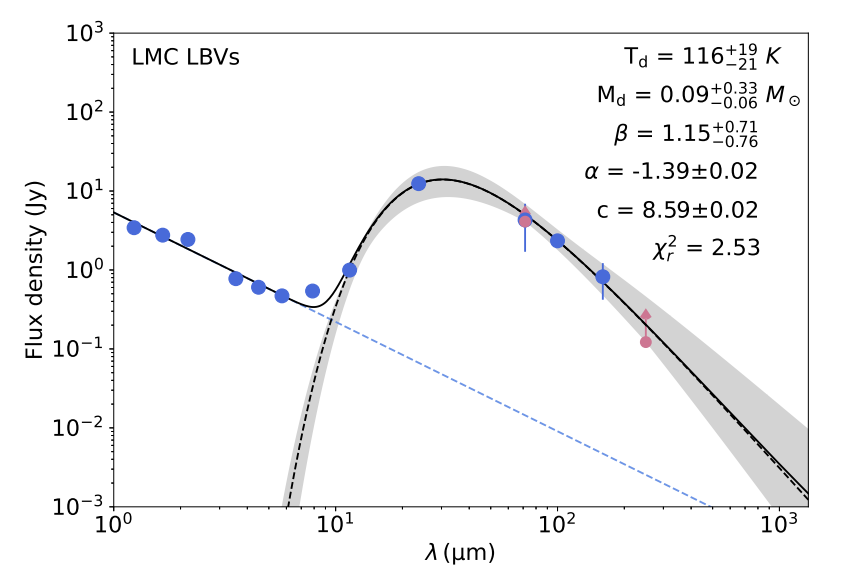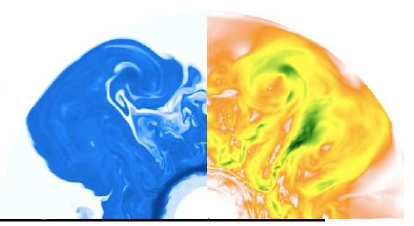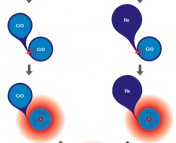Title: The contribution by luminous blue variable stars to the dust content of the Magellanic Clouds
Authors: C. Agliozzo, N. Phillips, A. Mehner, D. Baade, P. Scicluna, F. Kemper, D. Asmus, W.-J. de Wit, G. Pignata
First Author’s Institution: European Southern Observatory, Karl-Schwarzschild-Strasse 2, 85748 Garching bei München, Germany
Status: Accepted for publication in Astronomy & Astrophysics
A Dust Deficit
Not to be confused with the kind that collects under your bed, dust in the universe is crucial both to the evolution of galaxies and to the very light we receive from astrophysical sources. In fact, roughly half of the light that we eventually see from stars and gas is absorbed and re-emitted by dust at some point. More directly, from far-infrared observations of galaxies near and far, we know that there are significant reservoirs of cold gas and dust that power the star formation we see throughout cosmic time.
Nonetheless, a critical question remains about the origin of dust. It can be formed from growth on preexisting grains in the interstellar medium, in supernova explosions, or during the latest stages of low mass stellar evolution. However, these sources likely cannot explain the dust masses observed in the universe. One source class that may help fill this apparent gap are luminous blue variables (LBVs). LBVs are a rare type of hot, massive star undergoing a rapid phase of enhanced variability late in their lives.
LBVs under the Infrared Microscope
Through a study of the LBVs in the Large Magellanic Cloud (LMC), the authors of today’s paper hope to better understand the contribution of LBVs to the dust content of galaxies. The authors study 31 known LBVs in the LMC by compiling a multi-wavelength dataset using data from 2MASS, Spitzer IRAC and MIPS, WISE, and Herschel PAC and SPIRE. The authors conducted an analysis of the spectral energy distributions (SEDs) of the individual stars using the above data to review the classification of the sources as LBVs before studying them in more detail.
Next, the authors modeled the SEDs using a combination of stellar and dust templates. With their model, they are able to compute both a dust temperature and a dust mass. For individual stars they find temperatures between 62 to 145 K and masses between 0.002 to 0.055 solar masses. However, many of the individual LBVs in the work lack detections in the longest wavelength bands. Therefore, to get more robust results, the authors stacked the confirmed LBVs. Figure 1 shows these data and fit.

The authors also conduct a similar analysis for asymptotic giant branch (AGB) stars, another large contributor of dust in galaxies. With a model fit to a stack of 1342 extreme AGB stars in the LMC they find that the dust mass from the LBVs is roughly two orders of magnitude higher than the AGB stars, suggesting that LBVs are the dominant producer of dust between the two stellar populations.
First Runner Up
With measurements of the dust masses for LBVs in the LMC, the authors look for trends between the masses and other important stellar variables. Figure 2 shows the dust masses of LBVs in both the Milky Way and LMC as a function of stellar luminosity. The apparent lack of correlation between the two variables suggests that either the dust production is independent of the initial stellar mass or that the stars underwent significantly different evolutionary pathways. Additionally, the authors calculate that over the lifetime of the LBVs in the LMC, that they will produce between 104 and 105 solar masses of dust.

The authors also note that even though LBVs appear to be a significant source of dust production, they are also supernova progenitors. This leads to questions about the survival of dust when the star explodes and is subjected to the supernova blast wave. While this question remains largely unanswered, viable pathways for dust re-formation and even dust growth exist after the supernova explosion.
While supernova ejecta are predicted to produce roughly an order of magnitude more dust than LBVs, these results suggest that LBVs may be the second most important producers of dust in galaxies above evolved low mass stars. This is an important result not only towards understand the various stages of evolved star evolution, but also to the creation of the very dust that will later help begin the cycle of new star formation anew.
Astrobite edited by Sabina Sagynbayeva
Featured image credit: NASA APOD




